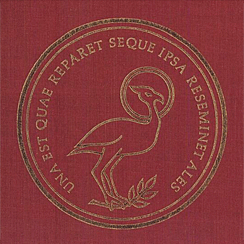| 1. Submissions should be sent in both Word and PDF format to editor.phoenix@utoronto.ca with the subject line “new submission”. An abstract of up to 50 words should be included with your submission. Contributors are urged to supply, if possible, a version of the abstract in French. Submissions are blind-refereed and therefore must be anonymous. The paper itself should not contain your name, address, affiliation, mention of conferences where the work was originally presented or individuals to be thanked, and references to previous work in proprietory format (e.g., see my 1982 article); in short, anything that might reveal to a prospective referee the identity of the author. Such references can be added back in later if the article is accepted. Please note that we do not consider material that has been published, will be published or is under consideration for publication elsewhere. The standard length of a Phoenix article is up to 10,000 words (including notes). Phoenix does not normally consider for publication articles longer than 42 pages in manuscript. 2. 3. 4. 5. 6. 7. 8. 9. Snodgrass, A. M. 1964. Early Greek Armour and Weapons from the End of the Bronze Age to 600 B.C. Edinburgh. ______ 1974a. “An Historical Homeric Society?,” JHS 94: 110-122. ______ 1974b. “Cretans in Arcadia,” Antichita Cretesi 2: 196-201. 10. 11. 12. A. M. Snodgrass, “An Historical Homeric Society?,” JHS 94 (1974) 110-122. | 1. Les articles soumis doivent être envoyés en format Word et PDF à l’adresse editor.phoenix@utoronto.ca. Un résumé d’une longeur maximale de 50 mots doit accompagner l’article soumis. Les auteurs sont également priés de fournir, dans la mesure du possible, une version anglaise de leur résumé. Les articles soumis sont évalués anonymement et doivent donc demeurer anonymes. L’article ne doit contenir ni le nom de l’auteur, ni son adresse, ni son affiliation universitaire, ni la mention de colloques où le texte aurait été initialement présenté, ni de remerciements, ni des références à des travaux précédents (e.g. voir mon article de 1982) ; en somme, quelque information que ce soit qui permette à l’évaluateur potentiel d’identifier l’auteur. Ce type de références pourra naturellement être ajouté plus tard si l’article est accepté. Phoenix ne retient généralement pas les propositions d’articles dont le contenu a été publié, le sera dans une autre revue ou se trouve en évaluation ailleurs. Un article publié dans la revue Phoenix contient habituellement 10 000 mots ou moins en incluant les notes. La revue ne retient généralement pas les articles dont le manuscrit fait plus de 42 pages. . 2. Une fois l’article accepté pour publication, l’auteur est prié d’en envoyer une version électronique en format Word et PDF. La version finale doit être conforme au guide de présentation de la revue. 3. 4. 5. 6. 7. 8. 9. Snodgrass, A. M. 1964. Early Greek Armour and Weapons from the End of the Bronze Age to 600 B.C. Edinburgh. ______ 1974a. « An Historical Homeric Society? », JHS 94: 110-122. ______ 1974b. « Cretans in Arcadia », Antichita Cretesi 2: 196-201. 10. 11. 12. J. de Romilly, « Les barbares dans la pensée de la Grèce classique » , Phoenix 47 (1993) 283-292. |
